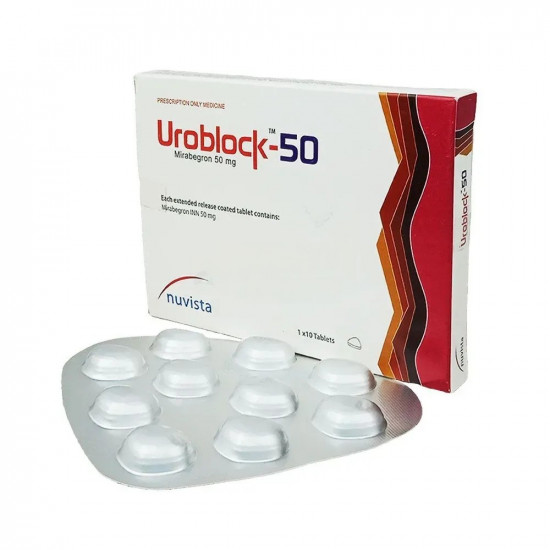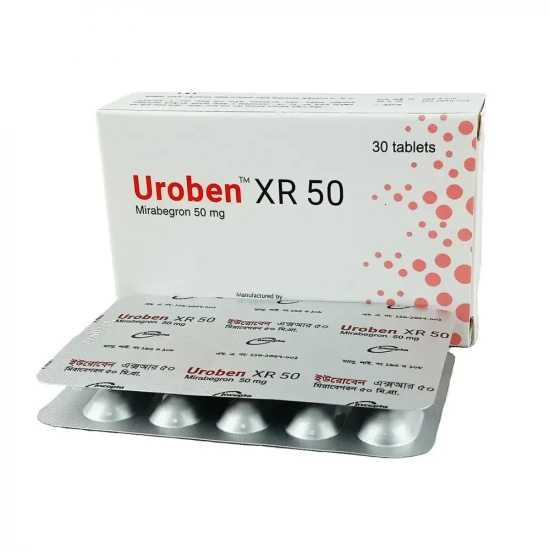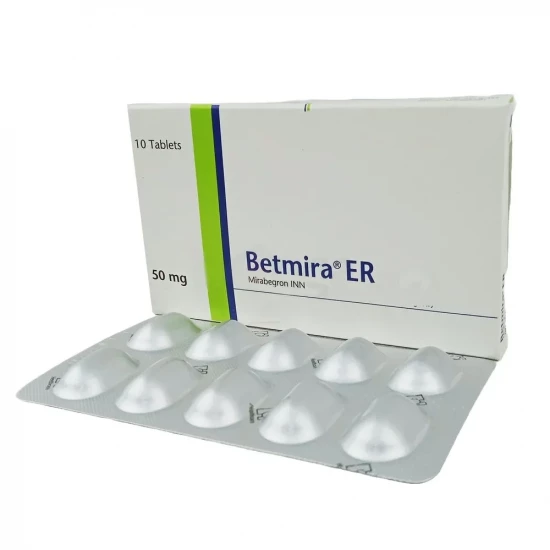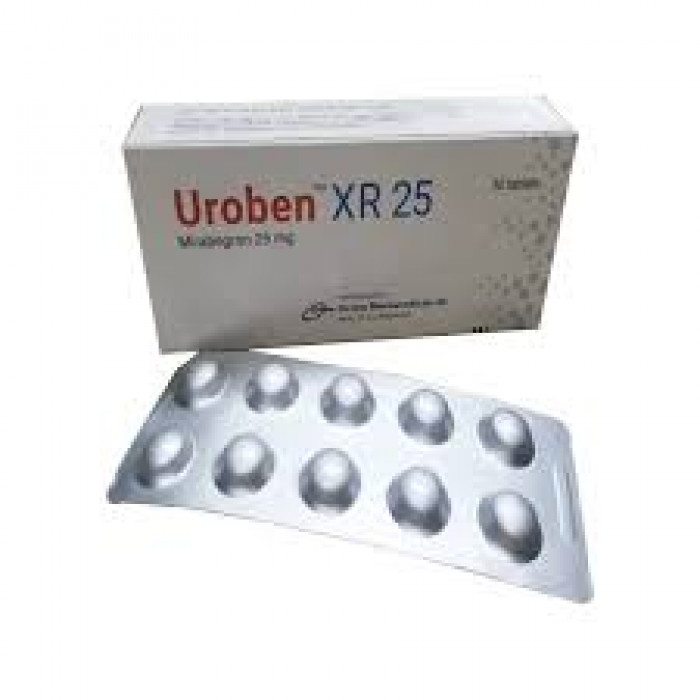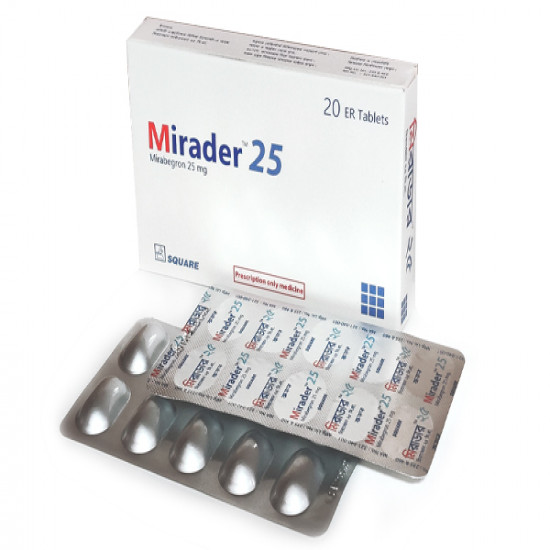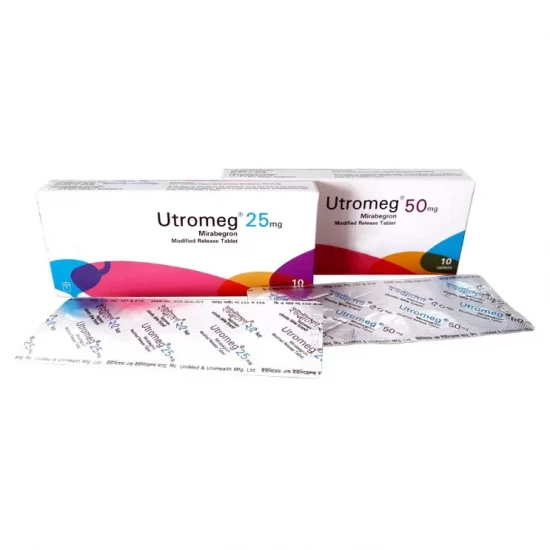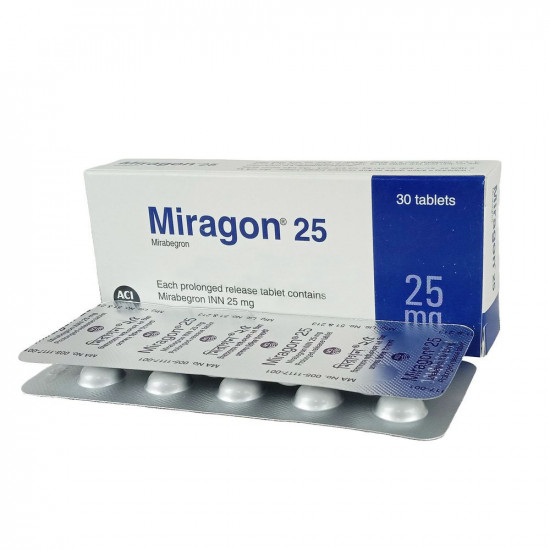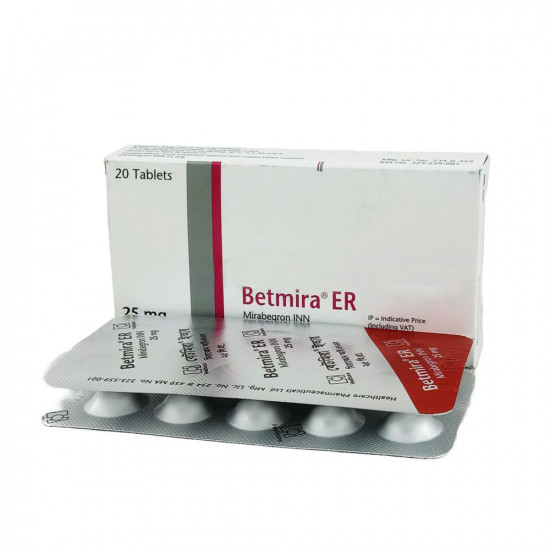
✔ 100% Authentic Product
👁️ Currently Viewing 1372
Betmira ER 25 | 1 Strip
Betmira ER Tablet is indicated for the symptomatic treatment of urgency, increased urinary frequency, and urge incontinence commonly seen in adult patients with Overactive Bladder (OAB) syndrome.
Discount
Price: ৳ 294
MRP:
৳
300
2%
Off

100% Genuine Products, Guaranteed

Safe & Secure Payments, Always

Fast, Secure & Efficient Delivery

Proper Packaging
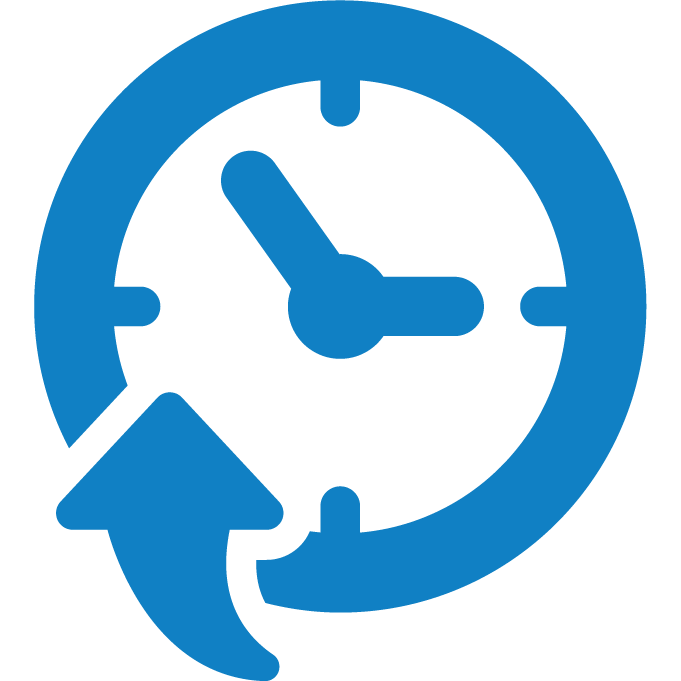 Cash on Delivery - All over Bangladesh
Cash on Delivery - All over Bangladesh Regular Delivery - 12-24 Hours, Dhaka City* Charge Tk.39-59
Regular Delivery - 12-24 Hours, Dhaka City* Charge Tk.39-59 Regular Delivery - 24-48 Hours, Other Cities* Charge Tk.99-110
Regular Delivery - 24-48 Hours, Other Cities* Charge Tk.99-110
 ফ্রি ডেলিভারিঃ - ৯৯৯ টাকা+ অর্ডারে, ঢাকা
শহরে
ফ্রি ডেলিভারিঃ - ৯৯৯ টাকা+ অর্ডারে, ঢাকা
শহরে ফ্রি ডেলিভারিঃ - ২৯৯৯ টাকা+ অর্ডারে, ঢাকার
বাহিরে
ফ্রি ডেলিভারিঃ - ২৯৯৯ টাকা+ অর্ডারে, ঢাকার
বাহিরে
100% Genuine Products, Guaranteed
Safe & Secure Payments, Always
Fast, Secure & Efficient Delivery
Proper Packaging
 Cash on Delivery - All over Bangladesh
Cash on Delivery - All over Bangladesh Regular Delivery - 12-24 Hours, Dhaka City* Charge Tk.39-59
Regular Delivery - 12-24 Hours, Dhaka City* Charge Tk.39-59 Regular Delivery - 24-48 Hours, Other Cities* Charge Tk.99-110
Regular Delivery - 24-48 Hours, Other Cities* Charge Tk.99-110 ফ্রি ডেলিভারিঃ - ৯৯৯ টাকা+ অর্ডারে, ঢাকা
শহরে
ফ্রি ডেলিভারিঃ - ৯৯৯ টাকা+ অর্ডারে, ঢাকা
শহরে ফ্রি ডেলিভারিঃ - ২৯৯৯ টাকা+ অর্ডারে, ঢাকার
বাহিরে
ফ্রি ডেলিভারিঃ - ২৯৯৯ টাকা+ অর্ডারে, ঢাকার
বাহিরে
✅ Description:
Mirabegron, the active ingredient in Betmira ER, is the first β3-adrenoceptor agonist. It acts by a dual mechanism—directly relaxing the smooth muscle of the bladder and influencing the sensory nervous system.
Activation of β3-adrenoceptors increases cyclic adenosine monophosphate (cAMP) levels, leading to relaxation of the detrusor muscle during the bladder’s storage phase, thereby enhancing bladder capacity and reducing symptoms of OAB.
✔️ Overdose
High doses (up to 400 mg) may cause palpitations, tachycardia, and elevated blood pressure.
Management is symptomatic and supportive, including monitoring of pulse, blood pressure, and ECG.
✔️ Dosage & Administration
Adults (including elderly):
The recommended starting dose is 25 mg once daily, taken with or without food. Based on patient response and tolerance, the dose may be increased to 50 mg once daily.
Renal or Hepatic Impairment:
For patients with severe renal impairment (ClCr/eGFR 15–29 mL/min/1.73m²) or moderate hepatic impairment (Child-Pugh Class B), the dose should not exceed 25 mg once daily.
Use is not recommended in patients with end-stage renal disease (eGFR <15 mL/min/1.73m² or on dialysis) or severe hepatic impairment (Child-Pugh Class C).
No dose adjustment is required based on gender.
Safety and efficacy have not been established in children under 18 years.
Administration:
Take Betmira ER Tablet once daily with water, swallowing it whole. Do not chew, divide, or crush the tablet.
✔️ Side Effects
The most frequently reported adverse effects include:
Tachycardia (1.2%)
Urinary tract infection (2.9%)
Serious reactions like atrial fibrillation (0.2%) were rarely observed. Discontinuation due to these effects was uncommon.
✔️ Drug Interactions
CYP3A/P-gp inhibitors: Co-administration with strong inhibitors (e.g., ketoconazole, itraconazole, ritonavir, clarithromycin) increases Mirabegron exposure (AUC ↑1.8-fold). In such cases, patients with mild–moderate renal or hepatic impairment should use 25 mg once daily.
CYP3A/P-gp inducers: Drugs like rifampicin may lower Mirabegron levels; however, no dose adjustment is generally required.
CYP2D6 substrates: Mirabegron moderately inhibits CYP2D6, increasing plasma levels of drugs like metoprolol and desipramine. Caution is advised when used with narrow therapeutic index drugs metabolized by CYP2D6 (e.g., thioridazine, tricyclic antidepressants).
Transporter interactions: Mirabegron weakly inhibits P-gp and may increase digoxin levels; start digoxin at the lowest dose and monitor serum concentrations.
No significant interactions observed with solifenacin, tamsulosin, warfarin, metformin, or combined oral contraceptives.
✔️ Betmira ER is contraindicated in patients with:
Hypersensitivity to Mirabegron or any excipient.
Severe uncontrolled hypertension, defined as systolic BP ≥180 mmHg or diastolic BP ≥110 mmHg.
✔️ Use in Pregnancy and Lactation
Data on Mirabegron use in pregnancy are limited. Animal studies indicate possible reproductive toxicity; hence, it is not recommended during pregnancy or for women planning to conceive.
Mirabegron is excreted in animal milk, suggesting potential excretion in human milk. It should therefore be avoided during breastfeeding.
No evidence of fertility impairment was observed in animals; effects on human fertility remain unknown.
✔️ Precautions & Warnings
- Renal impairment: Use is not recommended in end-stage renal disease; reduce dose to 25 mg in severe renal impairment.
- Hepatic impairment: Not recommended in severe hepatic impairment; use caution in moderate cases, especially with strong CYP3A inhibitors.
- Hypertension: May elevate blood pressure; monitor regularly, particularly in hypertensive patients.
- QT prolongation: Exercise caution in patients with congenital or acquired QT prolongation.
- Bladder outlet obstruction or concurrent antimuscarinics: Use with caution, as it may increase the risk of urinary retention.
✔️ Storage:
Store in a cool, dry place, protected from light and moisture.
⚠️Disclaimer:
At ePharma, we’re committed to providing accurate and accessible health information. However, all content is intended for informational purposes only and should not replace medical advice from a qualified physician. Please consult your healthcare provider for personalized guidance. We aim to support, not substitute, the doctor-patient relationship.




